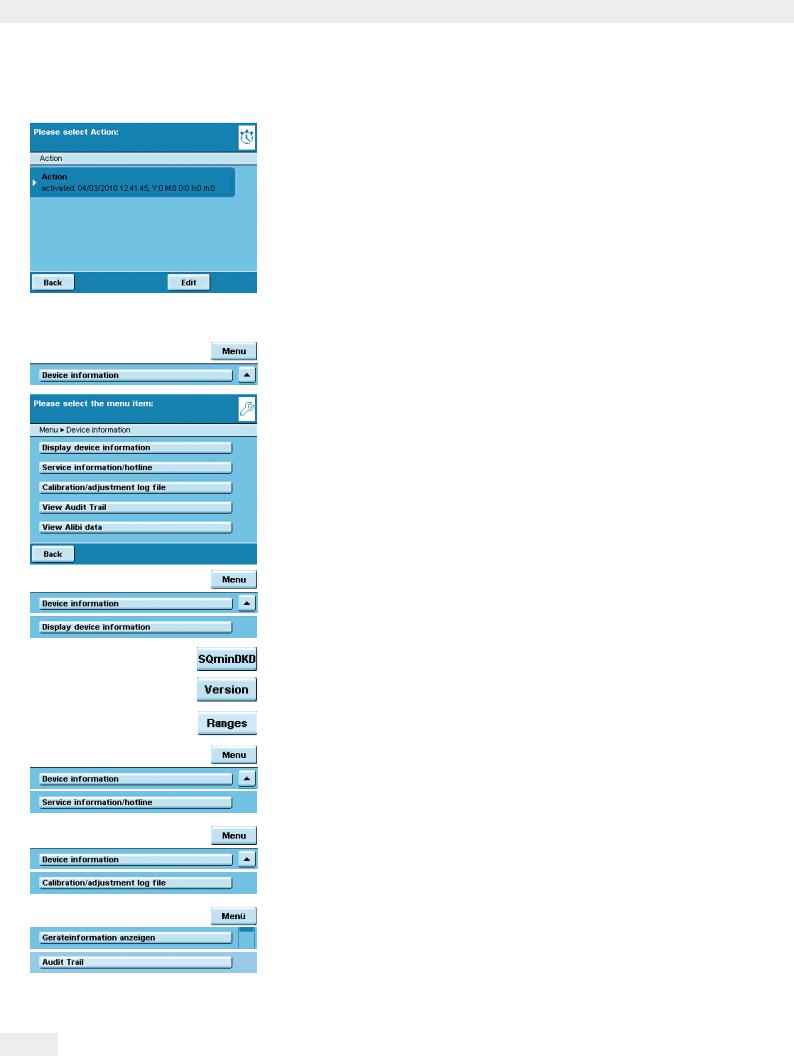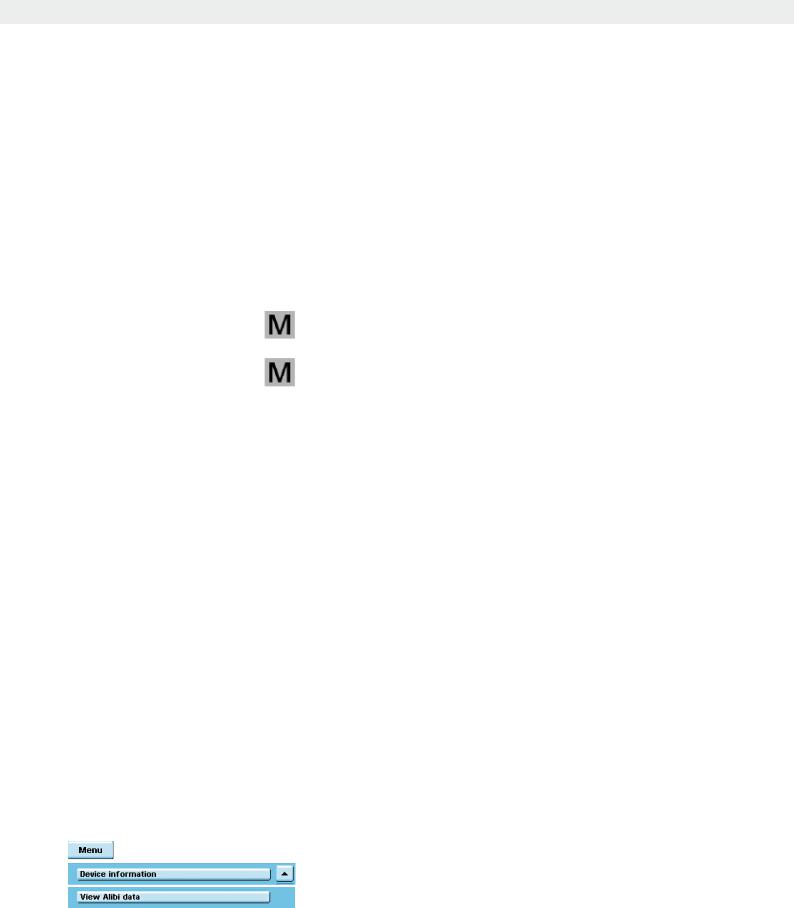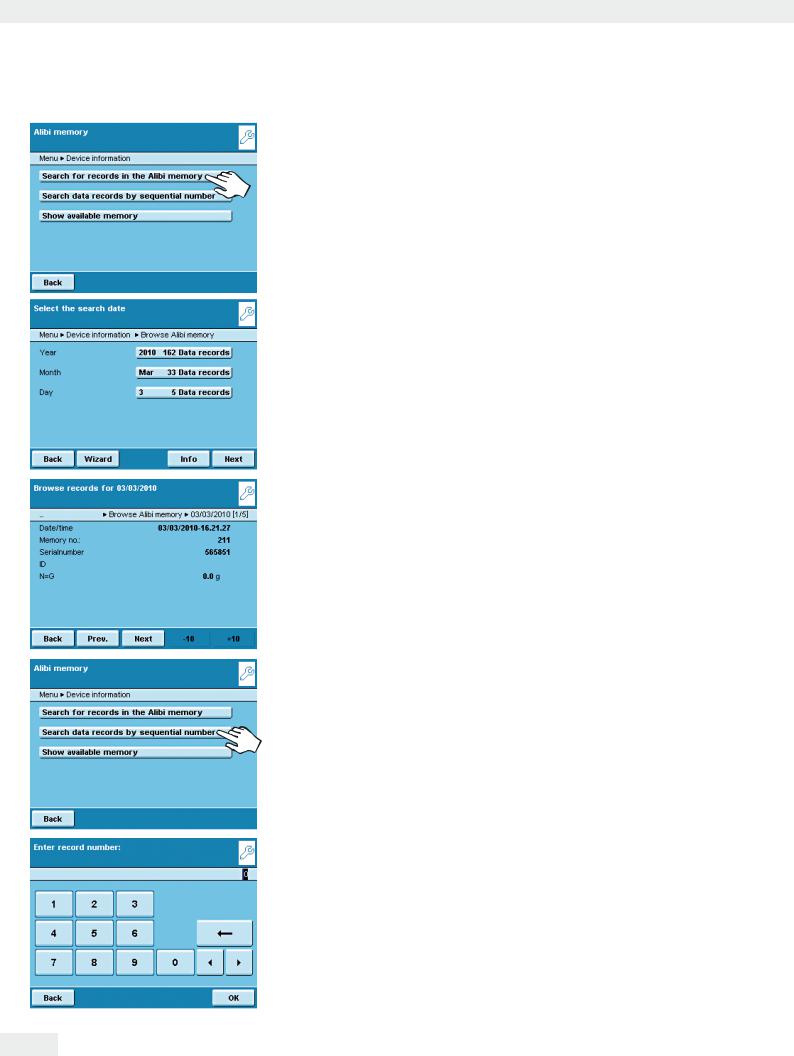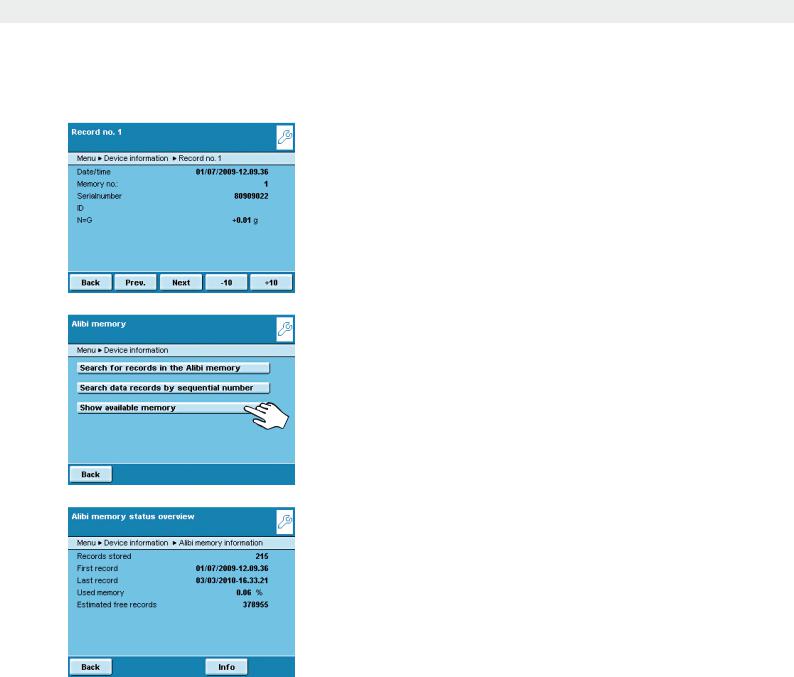
- •Sartorius Cubis Series
- •MSA Models
- •Contents
- •Notes on Using this Manual
- •Safety Precautions
- •Intended Use
- •General View of the Equipment and Equipment Supplied
- •Getting Started
- •Installation Instructions
- •Power Cord Receptacle
- •Anti-theft Locking Device (Accessory)
- •Preparing Below-Balance Weighing
- •Moving the Balance
- •Using the Balance
- •Turning the Balance On/Off
- •Operating Concept: Q-Guide
- •Using the Display and Control Unit
- •Quick Guide: First Weighing
- •User Interface (Touch Screen)
- •Using the Touch Screen
- •Activating/Switching Users
- •System Settings (Menu)
- •Leveling the Balance (Q-Level)
- •Configuring Calibration/Adjustment
- •Timer-controlled Actions
- •Displaying Device Information
- •Alibi Memory
- •Device Parameters
- •Task Management
- •Using Applications with the Factory Settings
- •Creating New Tasks (Configuration)
- •Configuring a Printout
- •Combining Applications into One Task
- •Executing Tasks
- •Weighing
- •Mass Unit Conversion
- •Minimum Sample Quantity SQmin
- •Individual Identifiers
- •Density Determination
- •Statistics
- •Calculation
- •Examples of Calculation Formulas
- •Diameter Determination
- •Diameter Determination for Cylindrical Bodies
- •Air Buoyancy Correction
- •Averaging
- •Formulation
- •Weighing in Percent
- •Timer-controlled Functions
- •Totalizing
- •DKD Measurement Uncertainty
- •Second Tare Memory (Preset Tare)
- •Parts Counting
- •Checkweighing
- •Importing/Exporting Data
- •Calibration and Adjustment
- •Calibration/Adjustment Using Internal Check Weight
- •Calibration/Adjustment Using External Check Weight
- •User Management
- •User Management
- •Creating User Profiles
- •Activating Users
- •Editing User Profiles
- •Interfaces
- •USB Port (PC)
- •PS2 Interface for Barcode Scanner or Keyboard
- •Interfaces (RS-232) 25-pin and 9-pin
- •Configuring Serial Ports
- •Bluetooth® Interface (COM C, Optional)
- •Network Interface (Ethernet)
- •Data Output
- •Data Input
- •Updating the Software
- •Error and Status Messages
- •GPL License
- •Care and Maintenance
- •Packing the Balance for Shipping
- •Disposal
- •Specifications
- •Balance Dimensions
- •Accessories
- •Declarations of Conformity
- •EC Type-Approval Certificate
- •Plates and Markings

System Settings (Menu)
yThe programmed action is displayed in the list of actions. Here you can edit them again at any time.
Displaying Device Information
You can view various information here.
t Select the appropriate area for the information that you want to view.
Viewing Basic Information
Here you can find all information about manufacturer, model, serial number, host name and IP address used.
tTo display SQmin and DKD parameters, touch SQminDKD.
tTo view the version of the balance, display and control unit and application software, e.g., Version.
tTo view the weighing ranges and digits (resolution), touch Ranges.
Information about Service and the Hotline
Service contact information is displayed here along with the hotline number as well as maintenance contract and maintenance interval information.
Viewing Calibration and Adjustment Data
The log file is displayed here with the results of all calibration and adjustment routines.
Viewing Records in Audit Trail
In Audit Trail, all changes are logged that have been performed in the menu, in the user profiles and in the task profiles.
The following will be recorded: user, profile, parameter ID, parameter, old and new setting.
42 Cubis MSA User Manual

System Settings (Menu)
Alibi Memory
The alibi memory contains (stores) weighing results with date and time and process number. This takes place every time a print event is triggered (e.g., by pressing Print P). The alibi memory is required when you wish to continue working with the weighing data on a computer.
The data memory has a ring buffer. The oldest data records can thus be overwritten by new ones. The user can define a memory-time dependent overwrite protection as well as a storage period if desired (default: 90 days, see chapter “Device Parameters”). The alibi memory can contain approximately 450,000 data records; the storage capacity depends on the volume of the individual data records.
The alibi memory is verifiable. When the balance is verified, you must check the correct function of the alibi memory by saving some values.
If the alibi memory is used in legal metrology (according to Council Directive 90/384/ EEC, replaced by 2009/23/EC , you should observe the following instructions:
–Make sure that there is sufficient storage capacity. Responsibility for this lies with the operator.
–The weighing results should be stored together with a unique ID code (e.g., number or date and time). This makes it possible for every weighing operation or weighing result to be assigned and verified if necessary without any problem. These ID codes must be indicated on any records generated on peripheral devices.
–When data are output, all the required tare and net values will be saved.
–It must be possible for the contractual partners involved to be able to check and verify the stored weighing results.
–Any continuously indicated weighing results that are not previously stored and have no identification codes may only be used in applications that are not for use in legal metrology (e.g., batching, controlling or the like). It is not permissible to circulate any results lacking identification codes for applications used in legal metrology!
–Records can be prepared by a peripheral device not subject to legal verification according to the preamble to Annex I of Directive 90/384/EEC (2009/23/EC) and Section 7b (3) 2 of the German Verification Act.
These records must contain the following information:
–An ID for every weighing result;
–When used in Germany, an additional indication that the weighing results may be compared with the weighing results legally stored on basis of the identification.
You must first install and activate the alibi memory in order to use it (see Device Parameters/Configuring the Alibi Memory).
Searching for and Displaying Data in the Alibi Memory
You can search for data using various search criteria and view the storage capacity of the alibi memory.
Cubis MSA User Manual |
43 |
|
|

System Settings (Menu)
Searching for Data Records by Date
y An overview appears in the display.
tLimit the search by selecting year, month or day.
tTouch Next.
y The desired data are displayed.
tUsing the Prev. and Next buttons, you can display more data records from the selected date.
Searching Data Records by Sequential ID Number (Data Record Number)
tInput the number of the desired data record.
tTouch OK.
44 Cubis MSA User Manual

System Settings (Menu)
y The desired data record appears in the display.
Viewing Information on the Alibi Memory and Available Memory Space
All important status information on the alibi memory are shown here. You can view the percentage of storage capacity utilized and an estimation of the number of data records that can still be stored. The exact number depends on the volume of the individual data records.
Cubis MSA User Manual |
45 |
|
|
